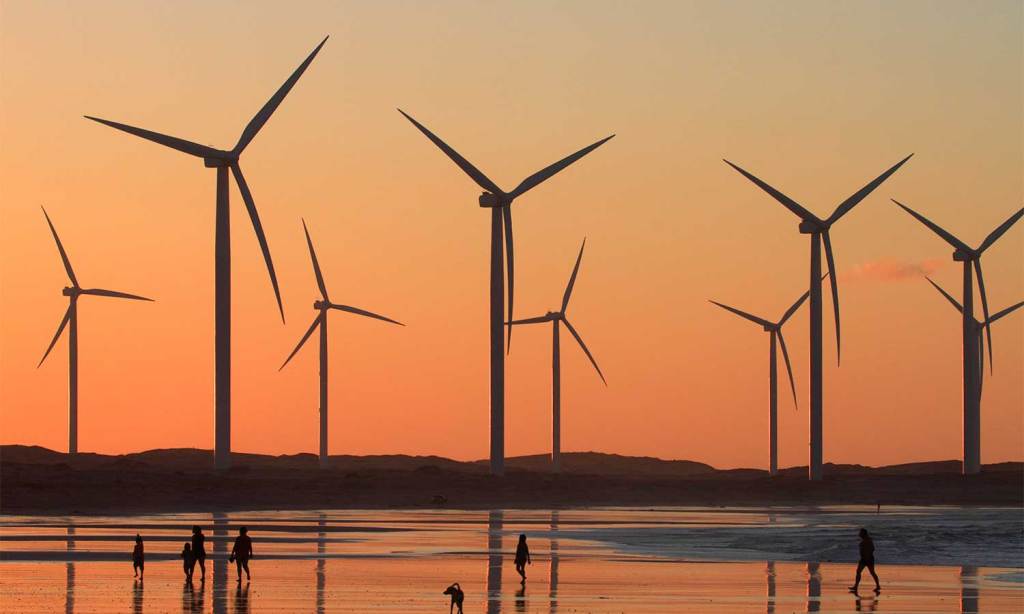There are times when sustainability can feel like an insurmountable challenge. But the more we dig into the realities of climate change and living more sustainability, one of the hurdles we face is understanding the differences between terms that sound kind of the same.
Sure, being carbon neutral or offsetting our emissions sounds like a great idea, but without understanding what those two things actually mean (and how related and dependant they are on each other), it can feel impossible to incorporate them into our lives in any meaningful way.
We won’t pretend climate change is an easy-to-tackle issue. Of course, it’s actually the opposite. But by breaking down exactly what a couple of phrases (that are easily mistaken for buzzwords) are, we hope it helps you to start taking steps that make tangible change in the fight for our planet.
What Is Carbon Neutrality?
According to the United Nations, “climate neutrality refers to the idea of achieving net zero greenhouse gas emissions by balancing those emissions so they are equal (or less than) the emissions that get removed through the planet’s natural absorption”. In layman’s terms, that means the business (or person) is taking climate action to prevent, reduce or remove their emissions from the environment.
There are plenty of organisations that either claim to be carbon neutral (sometimes referred to as climate neutral) or to be working towards it, but what does that actually mean? Achieving carbon neutrality means reducing your emissions as much as you can and offsetting what you can’t.
Carbon neutral was The New Oxford American Dictionary’s Word of the Year in 2006, so it’s a concept that isn’t exactly new, but it can seem confusing when you also hear phrases like “net zero” and “carbon zero” every night on the news. Your confusion is warranted because they depend on one thing: reducing your greenhouse gas emissions. The best way to think about it is this; carbon neutral is this: carbon neutral is the end result of reducing carbon emissions and offsetting the rest, and net zero is the result of having achieved emissions reduction so that you are offsetting no more than 10% of what’s left.
Net zero is the point where the total emissions of all greenhouse gases, not just carbon dioxide, have been reduced to a point where only those which cannot be avoided (and that’s no more than 10% of the original emissions) are removed from the atmosphere through offsetting or carbon capture and storage, which equals net zero emissions. Emissions are still allowed under net zero, but they have to be substantially reduced before they can be balanced by an equal reduction elsewhere.
What Is Carbon Offsetting?
As we’ve explained above, carbon offsetting is an important part of the climate change conversation, and without it, carbon neutrality doesn’t really exist. But what is offsetting, actually?
“Offsetting is a climate action that enables individuals and organisations to compensate for the emissions they cannot avoid, by supporting worthy projects that reduce emissions somewhere else,” according to the United Nations.
There are multiple ways to offset your carbon footprint. One is by buying carbon credits via a reputable source (the UN, for example), which might involve the planting of trees to remove carbon dioxide from the atmosphere. Another is by buying credits from a certified carbon capture and storage facility which will suck carbon out of the atmosphere and store or use it elsewhere — although this process has yet to be scaled up properly.
The first step in carbon offsetting involves figuring out exactly how much carbon you personally (or as a household) need to offset. You can use a carbon calculator like this one and from there you’ll have an idea of exactly how much offsetting you personally need to do.
In practice, it means an individual or business would estimate their emissions over a set period (perhaps a year), including travel in planes and cars, where you shop for produce, your daily lifestyle decisions, and the amount of energy your home uses. Once you have your personal (or business) footprint, you can invest money into initiatives that prevent, reduce or remove carbon from the atmosphere, whether locally or offshore — including in developing nations.
To learn more about sustainability and how you can embrace concepts like carbon neutrality and carbon offsetting in your everyday life, visit our sustainability vertical.

